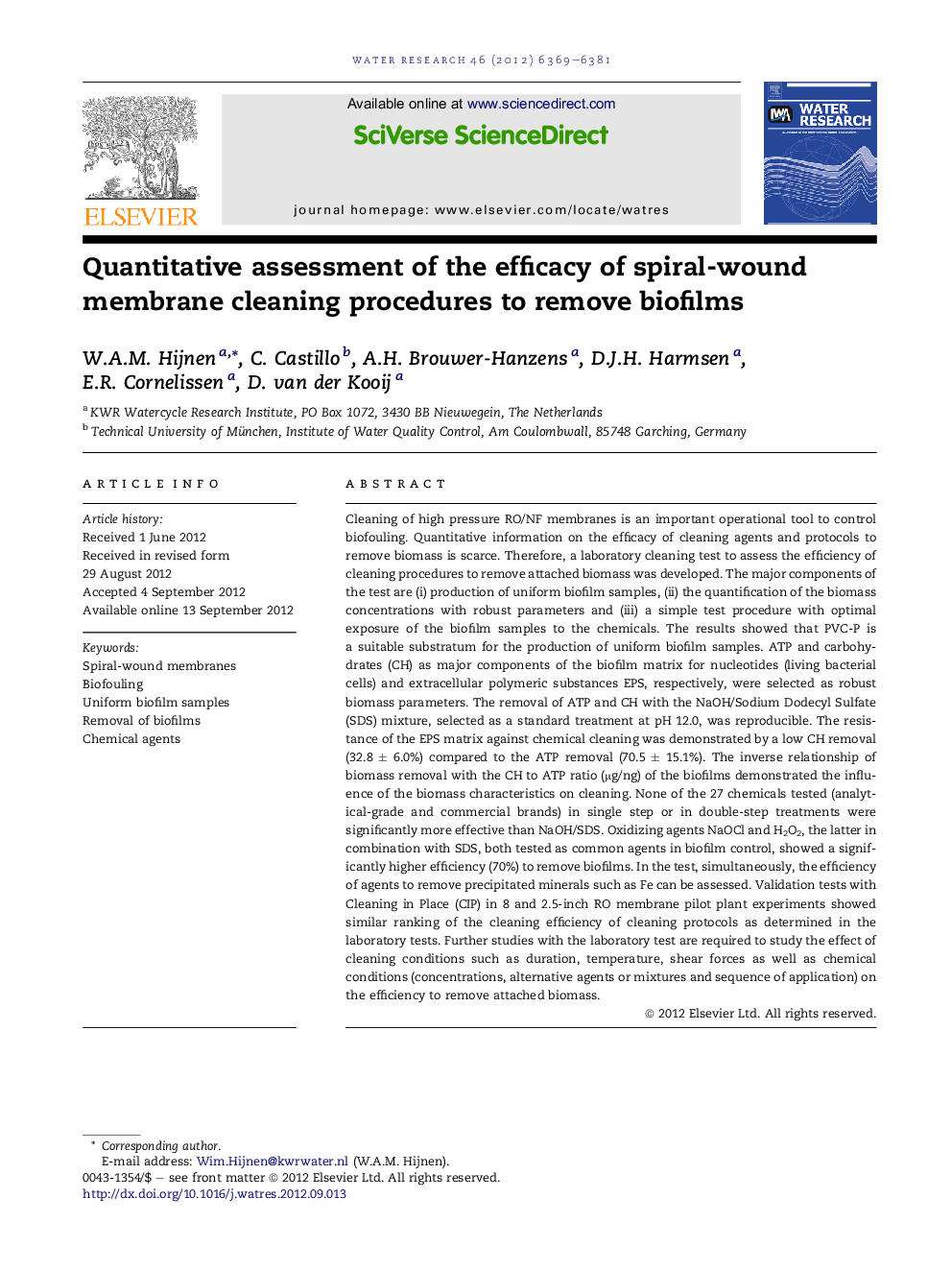| کد مقاله | کد نشریه | سال انتشار | مقاله انگلیسی | نسخه تمام متن |
|---|---|---|---|---|
| 4482453 | 1316859 | 2012 | 13 صفحه PDF | دانلود رایگان |

Cleaning of high pressure RO/NF membranes is an important operational tool to control biofouling. Quantitative information on the efficacy of cleaning agents and protocols to remove biomass is scarce. Therefore, a laboratory cleaning test to assess the efficiency of cleaning procedures to remove attached biomass was developed. The major components of the test are (i) production of uniform biofilm samples, (ii) the quantification of the biomass concentrations with robust parameters and (iii) a simple test procedure with optimal exposure of the biofilm samples to the chemicals. The results showed that PVC-P is a suitable substratum for the production of uniform biofilm samples. ATP and carbohydrates (CH) as major components of the biofilm matrix for nucleotides (living bacterial cells) and extracellular polymeric substances EPS, respectively, were selected as robust biomass parameters. The removal of ATP and CH with the NaOH/Sodium Dodecyl Sulfate (SDS) mixture, selected as a standard treatment at pH 12.0, was reproducible. The resistance of the EPS matrix against chemical cleaning was demonstrated by a low CH removal (32.8 ± 6.0%) compared to the ATP removal (70.5 ± 15.1%). The inverse relationship of biomass removal with the CH to ATP ratio (μg/ng) of the biofilms demonstrated the influence of the biomass characteristics on cleaning. None of the 27 chemicals tested (analytical-grade and commercial brands) in single step or in double-step treatments were significantly more effective than NaOH/SDS. Oxidizing agents NaOCl and H2O2, the latter in combination with SDS, both tested as common agents in biofilm control, showed a significantly higher efficiency (70%) to remove biofilms. In the test, simultaneously, the efficiency of agents to remove precipitated minerals such as Fe can be assessed. Validation tests with Cleaning in Place (CIP) in 8 and 2.5-inch RO membrane pilot plant experiments showed similar ranking of the cleaning efficiency of cleaning protocols as determined in the laboratory tests. Further studies with the laboratory test are required to study the effect of cleaning conditions such as duration, temperature, shear forces as well as chemical conditions (concentrations, alternative agents or mixtures and sequence of application) on the efficiency to remove attached biomass.
Figure optionsDownload high-quality image (247 K)Download as PowerPoint slideHighlights
► A laboratory test is available to quantify biofilm removal efficiency of agents and protocols used in membrane cleaning.
► Carbohydrate (EPS) removal by common used cleaning agents was lower than 50%.
► Ranking of the cleaning efficiency of chemicals by the test was similar to the ranking observed in CIP of membrane elements.
Journal: Water Research - Volume 46, Issue 19, 1 December 2012, Pages 6369–6381